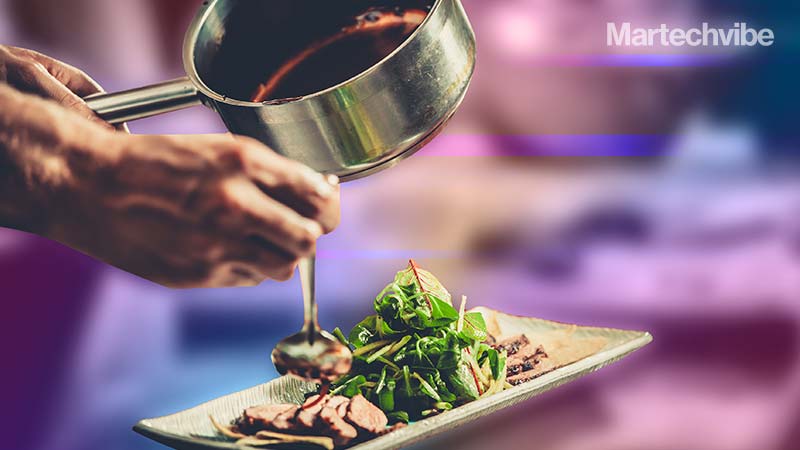Consumers Take a Bite Out of Restaurant Subscriptions
Coffee connoisseurs are happy to indulge in the craft, but that doesn’t mean they don’t like a good deal. Panera Bread tapped into this idea when it introduced a new concept of coffee subscriptions in 2020 — $8.99 a month for a bottomless cup of unlimited hot or iced coffee. It not only gratified every […]
Topics

Coffee connoisseurs are happy to indulge in the craft, but that doesn’t mean they don’t like a good deal. Panera Bread tapped into this idea when it introduced a new concept of coffee subscriptions in 2020 — $8.99 a month for a bottomless cup of unlimited hot or iced coffee.
It not only gratified every customers’ palette but triggered a new restaurant disruption. By then, OTT platforms had already tried and tested the subscription business model.
It worked. The company reported that guest frequency rose by over 200 per cent, and foods attached to coffee orders increased by 70 per cent. Within the first six months of the launch, the service garnered nearly 500,000 paid subscribers.
Earlier this year, Taco Bell debuted the Taco Lover’s Pass, a $10 monthly subscription that offers customers one free taco for 30 consecutive days. Aggregators stand to gain the most from this model. Make My Meal, a food subscription service with over 200 restaurants on-board, lets users choose healthy meals pre-ordered for a month so you don’t feel like cheating on your diet. Deliveroo first launched its monthly subscription service, Deliveroo Plus Gold, in the UAE in January 2022. One of the benefits is free delivery at a fixed fee of AED 39 per month with orders above AED 30. In April, talabat UAE launched talabat pro, a subscription service available across all seven emirates with a 14-day free trial period. The subscription offers consumers double the reward points on qualifying orders, and access to an exclusive rewards catalogue where points can be redeemed.
A steady revenue upfront is a welcome idea for restaurant brands that took a substantial hit during the pandemic. The benefits are tangible, restaurants can streamline the menu, reduce wastage and nurture a community of loyal customers.
Now, the idea of a fixed cost for food service is not new. All-you-can-eat buffets have had a long history. But consumer dining trends are changing, and businesses are still altering their value propositions to find the best approach to delight customers.
A report by PYMNTS and Paytronix examined the spending habits of US restaurant customers. It revealed that a cohort of high-spending, high-frequency customers are attracted by deals, discounts, and loyalty programs more than other spending groups.
- Deals & Discounts – Those in the high-spending and high-frequency category are much more likely than other respondents to identify special offers (47 per cent) and access to the restaurant’s loyalty program (42 per cent) as reasons for them to order directly from restaurants.
- Demographics – Restaurant customers in younger age brackets are more likely to be high-spending and high-frequency. Of Generation Z consumers, 42% fall into the highest value segment, followed by 35% of millennials and bridge millennials. Only 24 per cent of Generation X consumers and 12 per cent of Baby Boomers and Seniors are high-spending, high-frequency customers.
- Aggregator Choice – Of the high-spending, high-frequency group, 58 per cent of customers used DoorDash, the most-used platform, in the past 15 months. However, they were more likely than other customers to have used the two other leading platforms, Uber Eats and Grubhub, and smaller platforms such as Seamless and Postmates.
Setting up a subscription plan
Market research is the first step for any restaurant brand. You need to explore subscription plans and figure out which will work best, consider buying behaviours, patterns in sales, geographies and average ticket size.
Ask yourself, whom do you want to offer this plan to, at what price, and what are the flexible features? Does the deal come with no-frills or can the customers expect the same level of customization they are usually accustomed to? Is there an existing brand or business challenge that you would like to solve via this model? For example, you can target the promotion to a certain time of day or store location that needs some extra attention.
Since a subscription service represents pre-sales, you have an idea of what to expect for your future. Prepare your staff for seamless execution, especially when sales numbers bump up. The last thing you want to do is make a promise and not be able to deliver.
Traditional issues like communication silos between the front of house (FOH) and the back of house (BOH) are solved using smart tools that help POS communicate with kitchen display systems. Bin management tools ensure you have a prerequisite of the ingredients to fulfil future orders. At the front end, make sure you have a clearly defined line item in your POS to feed analytics later and calculate the success of the plan.
Conclusion
It’s a big win for restaurant brands when marketers consider how such a move carves a niche for the brand in the consumer’s mind. Apart from the short-term opportunity of steady revenue and streamlined logistics, subscription models change the way customers feel about a brand. According to research by Yotpo, 37% of customers don’t consider themselves brand loyal until they’ve made five purchases. In today’s times, brand loyalty is dwindling and marketers are fighting hard to retain customers in the face of rising competition.







































































































